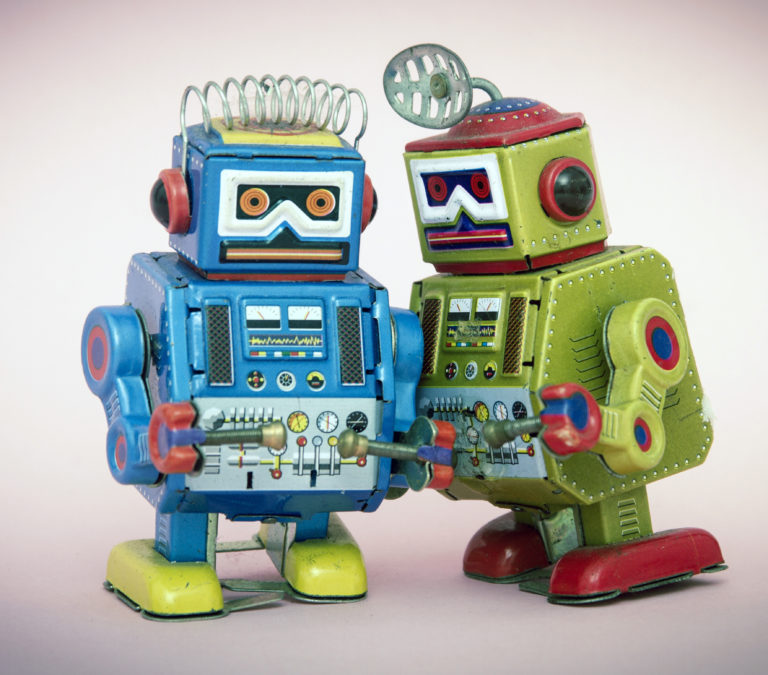“Whenever the topic of chatbots or AI in human customer service arises, a point of view is soon shared that AI and machine learning represent some kind of Armageddon for the jobs market. Conversely, others like myself, argue that they can enable people working in monotonous jobs to use this technology to up-skill, and to work in more analytical and more engaging jobs.”
A recent report by Oracle, ‘What is the future role for humans in delivering customer experience?’ found that that 80% of businesses say they already use or plan to use chatbots by 2020. AI and machine learning are also being used by live chat agents, and by chatbots – with the latter using AI and machine learning to provide a 24-hour means for customers to access information and to perhaps resolve some of their queries. When a chatbot can’t help, then there is always the option of using other customer communications channels – including live chat.
Chatbots and better job performance!
In my opinion, AI will help people do their jobs more effectively, rather than put their jobs at risk. It could open up higher positions, for example with a chatbot not having all the answers and transferring to the appropriate human operators – more of a supervisory role stepping in when they need to. Or it will reduce some of the workload they will have to do, opening them up to be able to do other tasks that before they may never have had time for.
However, it still important to consider whether automation goes too far. There is, after all, no point in implementing any kind of technological solution if it doesn’t create benefits for customers, the organisation itself and for its business partners. So, in other words, it’s important to consider when an AI and ML solution needs the support of the human touch – particularly when empathy is required. On the other hand, AI and ML can be utilised by live chat agents to help them to more rapidly and efficiently find the best solution to customers’ issues in their knowledge base.
Yet from a customer service point of view, artificial intelligence in human customer services has only just started being introduced into organisations over the last year or so. However, there have been a few cases of larger organisations such as Argos introducing several initiatives, which focuses on supply chain optimisation, recommendation engines and search.
Natural language processing and machine learning
Martin Hill-Wilson, Founder of Brainfood Consulting adds: “There are two main technologies under the AI umbrella that are of interest to customer service. They include natural language processing (NLP) and machine learning (ML) to predict customer intent once sufficiently trained, and as such can infer intent without being specifically trained on every iteration of how customers express an intent such ‘can I return this’? There are a range of interfaces that can be used to provide conversational engagement with customers.”
“Chatbots are often used to capture customer needs as a ‘front door’, to recognise and then deliver frequently asked questions (FAQ) level answers before being escalated. Then there are virtual assistants (VA), which have a stronger heritage and can do more in terms of personalised engagement and complete workflows. Finally, there are a few examples of VAs being used to assist advisors find stuff, complete workflow and orchestrate follow up communication with customers – a key future trend that improves consistency and productivity, allowing the advisor to focus on experience management.”
He says that more than 60% of inbound customer demand is dealt with via live chat assistance, whether that’s voice or text. He thinks that in the future this could shrink to just 25%, with the remainder being absorbed by self-service, proactive service and demand elimination. He therefore predicts that over time, the number of ‘live advisors’ will shrink, and the speed of this occurrence very much depends on the decisions made by each organisation.
Wimbledon 2018: How AI and chatbots are serving innovation
Headcount maintained
At present, he reveals, that most organisations are maintaining their headcount to allow more time to work with customers to evolve the customer service experience. He predicts that this will mature, leading to a requirement for a new set of empathy-skills for highly competent advisors to “focus on the interactions that drive lifetime value and purchasing behaviour – these are when things are emotional, complex or somehow matter to the relationship between brand and customer.”
In his opinion the new jobs will be generated as a result of the new engagement model, including: digital labour management, knowledge management, the commissioning of new virtual assistants, and actioning the new tranches of insights that are surfaced from pattern finding algorithms. “However, it is important to recognise that the greatest impact on human capital is more likely to come from robotic process automation (RPA) driven automation than chatbots”, he says before commenting: “Much time is spent in white collar manual work is low level administration. As such automation (RPA) is the much more relevant solution which may or may not use AI.”
Hill-Wilson adds: “Any task that requires analysis and decisioning will become the domain of AI technologies once they are fully embedded into digital workflows. So, humans can be directed to deal with outliers in contract negotiations or anomalies in annual account submissions as opposed to wasting eyeballs on checking everything.”
Customer perspectives
From a customer perspective, when speaking with a chatbot, there is no need to fill in lengthy pre-chat forms before entering the conversation. The chatbot can gather this information from the enquirer, which means they feel like they are already progressing as a dialogue is occurring. If the chatbot is then able to answer all of their questions, then this has happened in a quick manner which is only bound to increase that particular customer’s satisfaction. If an operator needs to get involved, then they can pick the enquiry up where the chatbot left off, allowing them to continue the interaction seamlessly, rather than getting the customer to repeat themselves.
Chatbots can do more than chit-chat
So, to what extent does artificial intelligence in human customer services improve or destroy customer relationships? Well, it is hard to build up a rapport with a bot; they are just responding in a matter of fact manner, rather than having the types of conversations that two humans can have with one another. However as long as the answers are accurate, the customer will still hold a high opinion of the organisation as they are able to respond quickly. Yet, there is also still a need for the human touch because not all enquirers will want to speak with a bot, or the bot won’t have all of the answers in this early stage and so there will be times when a human operator needs to get involved.
Self-service strategy
“Chatbots are part of a brands self-service strategy”, says Hill-Wilson before commenting: “As such they address customer expectations for 24×7 on demand service. They also remove queuing (unless escalated), and as far as agents are concerned, AI-based knowledge management can provide on screen suggestions for ‘best answers’ with associated confidence levels, while still allowing agents to override and improve.”
So, does chatbot automation go too far? No, I don’t think so. Everyone gets stuck on focusing on the possibilities, which usually include a lot of negative opinions – robots are going to take over the world etc. However, the technology is being tested and rolled out in a controlled manner, and even if it wasn’t, it’s still down to organisations to implement it and choose at what scale.
Chatbot conversations are currently very to the point at the moment; it knows what questions it needs to ask, and how to respond to certain questions. When speaking on the phone or via live chat with a human operator emotion can be injected into the conversation, and the engagement wouldn’t be so structured.
The chatbots are here: are you prepared?
Hill-Wilson adds: “It comes down to the ability to listen, understand and respond appropriately. The best humans still do that better than non-humans. However, this could be replicated over time because AI tech is evolving fast. Training an algorithm to understand a core intent (‘What’s my current balance?’, for example, can have as many as a few thousand iterations.”
“However once captured, the chatbot ought to be able to recognise any new version. Before that point, the bot might be programmed to escalate or ask further questions. So, the quality of interaction depends on how well that conversation is designed and the expectation around what a chatbot can and cannot understand, and then do.”
So, the current training limitations of some chatbots could prove to more frustrating than interacting with a human being. Therefore, they should ideally be used for simple tasks, because not event mobile phone assistants Siri or Alex can at present carry out every task. They, too, are limited in their functionality. This will nevertheless improve over time.
Balancing AI and humans
So, what are your top 5 tips for balancing AI, machine learning and the human touch to achieve customer service best practice? Here’s my advice:
- 1. Fully understand what an AI chatbot is capable of, without this your company could plan for an instance that is not possible.
- 2. Have a strategy in place of what exactly your company expects from the chatbot, is it going to prequalify a visitor before transferring to a human operator, or will it answer frequently asked questions and transfer when it cannot answer.
- 3. Test it before placing the chatbot within a live environment and real customers, test it thoroughly ensure it responds as expected.
- 4. Ensure you know what the chatbot is going to do if your human operators are unavailable. Telling an enquirer there’s no one available to help and to try again later is more likely to cause customer frustration than offering for representative to contact them.
- 5. Constant monitoring – ensure you bot is meeting expectations and identify areas for improvement.
For the moment the human live chat interface is a lot more mature and it is able to do a lot more than AI chatbots. However, with a chatbot in place it can make chat operations more efficient whilst maintaining or improving customer satisfaction. So, they both have a place within this digital era, however, for now human live chat has the edge. Still, chatbots can add value for both the customer and the organisation. This can also increase the efficiency in terms of time and financial savings of customer service, while also being part of an omnichannel customer service channel and experience.

Artificial Intelligence — what CTOs and co need to know










